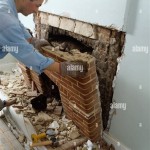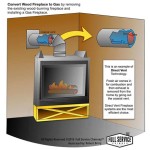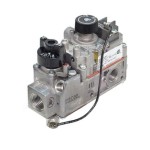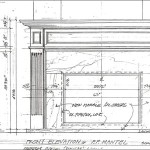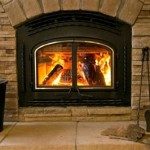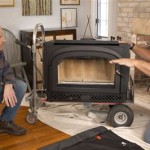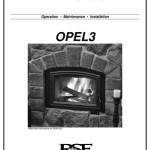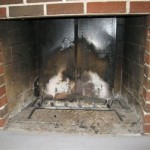How to Install a Blower in a Wood Burning Fireplace
Installing a blower in a wood burning fireplace can significantly enhance efficiency and comfort. A blower circulates warm air from the firebox into the room, allowing you to enjoy the warmth of the fire more effectively. While it may seem like a complex task, with the right tools, guidance, and a little patience, you can successfully install a blower in your fireplace. This article will provide a step-by-step guide to ensure a smooth and safe installation process.
Choosing the Right Blower
The first step is choosing the appropriate blower for your fireplace. Consider the following factors:
- Fireplace Size: Select a blower with sufficient air circulation capacity for your fireplace's size and heat output.
- Heat Output: Choose a blower with an appropriate heat output to match the fireplace's intended use and room size.
- Installation Type: Determine whether you need a blower that mounts directly to the fireplace or one that connects to the existing chimney.
- Noise Level: Consider the noise level of the blower, especially if it will be located in a frequently used room.
Refer to the manufacturer's specifications and consult with a fireplace specialist to ensure you choose a compatible blower for your fireplace.
Necessary Tools and Materials
Before you begin installation, gather the following tools and materials:
- Screwdriver: A Phillips head screwdriver is necessary for attaching the blower and securing the mounting bracket.
- Drill: A cordless drill with various bits will be helpful for drilling pilot holes and attaching the blower components.
- Measuring Tape: Use a measuring tape to accurately determine the dimensions for installing the blower and its components.
- Level: A level will ensure that the blower is installed correctly and evenly.
- Safety Glasses: Protect your eyes from debris and potential sparks during installation.
- Work Gloves: Wear work gloves to protect your hands from sharp edges and potential injuries.
- Blower: The chosen fireplace blower, including the mounting bracket, wiring, and any necessary accessories.
- Electrical Wire: Depending on the blower model, you might need electrical wire and connectors for the blower's power supply.
Installation Steps
Once you have gathered all the necessary tools and materials, follow these steps for installing your fireplace blower:
- Disassemble the Fireplace: If the blower needs to be mounted directly to the fireplace, you may need to dismantle the fireplace surround or remove the fireplace grate. This step will ensure access to the firebox for installing the blower.
- Position the Blower: Select a location for the blower within the firebox that allows for optimal air circulation and does not obstruct the fire. Ensure the blower is placed far enough from the fire to avoid overheating.
- Mount the Blower: Position the blower's mounting bracket according to the manufacturer's instructions. Use the drill and screws to securely attach the bracket to the fireplace.
- Connect the Blower: Connect the blower to the power source, following the wiring diagram provided with the blower. Ensure proper grounding is established. If you are unfamiliar with electrical work, it's recommended to seek the assistance of a qualified electrician.
- Test the Blower: After installation, test the blower to ensure it operates correctly. Verify air circulation and check for any unusual noises.
- Reassemble the Fireplace: Once you have confirmed the blower's functionality, carefully reassemble the fireplace components, ensuring that the blower is securely mounted and there are no loose parts.
Additional Considerations
During the installation process, consider the following factors:
- Fireplace Type: The installation process may vary depending on the type of fireplace, such as a traditional masonry fireplace, a prefabricated fireplace, or a zero-clearance fireplace. Refer to the manufacturer's instructions for your specific fireplace model.
- Safety Precautions: Always work in a well-ventilated area, disconnect power to the fireplace before working on electrical components, and take necessary precautions to prevent fires or injuries during installation.
- Professional Assistance: If you are not comfortable with the installation process or if you have any questions, seek the assistance of a qualified fireplace professional. They can ensure the blower is installed correctly and safely for optimal performance.
Proper installation of a fireplace blower can provide significant benefits, including increased warmth, better efficiency, and a more enjoyable fire experience. By following these steps and ensuring your blower is installed correctly, you can maximize its potential while ensuring a safe and comfortable environment.

Fireplace Efficiency Blowers And Why You Should Have One

Why Should I Get A Fireplace Blower For My Masonry

How To Replace Your Rsf Fireplace Blower Fan

Noisy Gas Fireplace Blower Here S How To Replace It Diy

How Does A Fireplace Blower Work Learn About Blowers

Fireplace Blower Fans What You Need For Heat Full Service Chimney

A Frame Cabin Build 4 Wood Stove Blower Install

Fireplace Blowers Explained How Fans Work Regency

Best Wood Burning Fireplace Insert With Blower Forestry Reviews

Large Wood Stove With Blower Osburn 3500 Rockford Chimney
Related Posts

